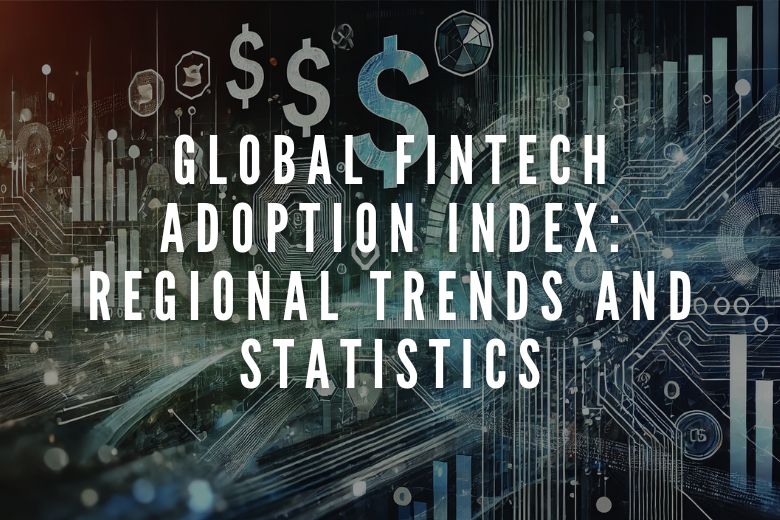The financial technology (fintech) industry has seen unprecedented growth over the past decade, reshaping the landscape of financial services worldwide. Fintech innovations are providing consumers with convenient, efficient, and often more affordable financial solutions. As a result, the adoption of fintech services has surged globally, with significant variations across different regions. This article explores the global fintech adoption index, highlighting regional trends and key statistics that shed light on the evolving fintech landscape.
Global Fintech Adoption Overview
Fintech adoption has become a global phenomenon, driven by advancements in technology, increased internet penetration, and changing consumer preferences. As of the latest reports, the global fintech adoption rate stands at an impressive 64%, with over half of the world’s consumers utilizing at least one fintech service.
Key Statistics
- The global fintech adoption rate has grown from 16% in 2015 to 64% in 2021.
- Over 4.5 billion people globally are now aware of fintech services.
- Mobile payments, digital banking, and insurance tech are among the most widely adopted fintech solutions.
Regional Analysis
While fintech adoption is widespread, the rate of adoption and the types of services used vary significantly across regions.
Asia
Asia leads the world in fintech adoption, with countries like China and India at the forefront. India boasts the highest adoption rate globally at 87%, driven by a young, tech-savvy population and supportive government policies.
Europe
Europe follows closely with a robust fintech ecosystem, particularly in the UK, which has become a hub for fintech innovation. The region’s adoption rate is around 76%, with significant contributions from digital banking and investment services.
North America
North America, particularly the United States, has a mature fintech market with an adoption rate of approximately 65%. The focus here is on digital payments and personal finance management tools.
Latin America
Latin America is experiencing rapid growth in fintech adoption, currently at 60%. Countries like Brazil and Mexico are leading the charge, driven by the need for financial inclusion and mobile banking solutions.
Africa and Middle East
Fintech adoption in Africa and the Middle East is steadily increasing, with an adoption rate of 50%. Mobile money services are particularly popular in this region, addressing the challenges of financial inclusion.
Consumer Insights
Understanding consumer behavior is crucial to comprehending the dynamics of fintech adoption. Several factors influence how consumers interact with fintech services, including convenience, cost savings, and improved user experiences.
Key Insights
- Convenience and Accessibility: Consumers prefer fintech solutions for their ease of use and accessibility, especially in regions with limited access to traditional banking.
- Cost Savings: Many fintech services offer lower fees compared to traditional financial institutions, attracting cost-conscious users.
- User Experience: Enhanced user interfaces and personalized services make fintech applications more appealing to consumers.
Technological Innovations
The fintech industry thrives on continuous innovation. Several emerging technologies are driving fintech adoption, transforming how financial services are delivered.
Innovations
- Mobile-First Banking: With the rise of smartphones, mobile-first banking solutions are becoming the norm, particularly in regions like Southeast Asia and Africa.
- Blockchain and Cryptocurrency: Blockchain technology and cryptocurrencies are gaining traction, offering decentralized and secure financial transactions.
- Artificial Intelligence (AI): AI is being utilized for personalized financial advice, fraud detection, and improving customer service.
Future Trends and Predictions
The future of fintech looks promising, with several trends expected to shape the industry in the coming years.
Predicted Trends
- Increased Regulation: As fintech grows, regulatory frameworks are expected to become more stringent to ensure consumer protection and financial stability.
- Integration with Traditional Finance: Collaboration between fintech companies and traditional financial institutions will likely increase, offering hybrid solutions.
- Focus on Financial Inclusion: Fintech will continue to play a crucial role in improving financial inclusion, particularly in underserved regions.
Regional Case Studies
India: Leading the Fintech Revolution
India’s fintech landscape is characterized by a diverse range of services, from digital payments to lending platforms. The high adoption rate can be attributed to:
- Government Initiatives: Programs like Digital India and Jan Dhan Yojana have boosted digital financial inclusion.
- Mobile Penetration: Widespread use of smartphones has facilitated access to fintech services.
China: A Fintech Powerhouse
China’s fintech ecosystem is dominated by giants like Alipay and WeChat Pay, which have transformed everyday transactions.
- Integration with Daily Life: Fintech services are seamlessly integrated into social media and e-commerce platforms.
- Innovative Solutions: From peer-to-peer lending to robo-advisors, China’s fintech sector offers a wide array of services.
The Role of Fintech in Financial Inclusion
Fintech has the potential to bridge the gap between the unbanked and financial services, especially in developing regions.
- Mobile Money: In Africa, mobile money services like M-Pesa have revolutionized access to financial services.
- Digital Lending: Platforms offering microloans are providing crucial financial support to small businesses and individuals without access to traditional banking.
Challenges and Opportunities
Challenges
- Regulatory Hurdles: Navigating different regulatory environments remains a significant challenge for fintech companies.
- Security Concerns: Ensuring the security of digital transactions and protecting consumer data is paramount.
Opportunities
- Collaboration with Banks: Partnerships between fintech firms and traditional banks can lead to innovative hybrid solutions.
- Expanding Reach: There is immense potential to expand fintech services to rural and underserved areas, driving financial inclusion.
Conclusion
The global fintech adoption index highlights the rapid growth and regional variations in the adoption of fintech services. As technology continues to evolve and consumer preferences shift, the fintech industry is poised for further expansion. Understanding these trends and statistics is essential for stakeholders looking to navigate the dynamic landscape of financial technology. The future holds significant potential for fintech to revolutionize financial services, making them more accessible, efficient, and tailored to the needs of consumers worldwide.

